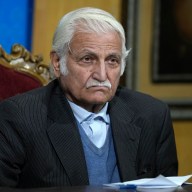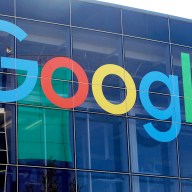A summit between flu vaccine makers and the heads of the UN and the World Health Organization produced no new concrete offers of donated vaccine, the WHO said Tuesday.
While manufacturers acknowledged a global responsibility, at least one wanted to know who would pay for vaccine to be set aside for developing countries. And none of the major manufacturers offered to donate or set aside for UN purchase a portion of their H1N1 vaccine production, a WHO spokesperson said.
But Melinda Henry played down the lack of progress, saying talks are ongoing.
“I don’t think that firm pledges were really expected today,” said Henry, spokeswoman for the agency’s immunization, vaccines and biologics division.
“I think we could say that WHO is hopeful and we’re working with these companies and we’re going to be talking with them on a bilateral basis in the coming days and weeks.”
The meeting brought executives of more than 30 vaccine-making companies to Geneva to meet with UN Secretary General Ban Ki-moon and WHO Director General Margaret Chan.
Meanwhile, a committee of experts that advises the WHO on vaccine issues reported Tuesday that it is “premature” to tell vaccine makers to move into large scale production of a swine flu vaccine.
The ad hoc policy advisory working group, as it is called, recommended manufacturers complete the production of seasonal flu vaccine for the Northern Hemisphere winter, while making plans to potentially go into development of a vaccine for the novel H1N1 afterwards.
The report said the Northern Hemisphere vaccine will be completed in two lots, at the end of June and the end of July.
The committee said manufacturers should be urged to begin making trial lots of H1N1 vaccine when the so-called vaccine seed strain is ready. It’s expected that at least one of the seed strains under production by a number of WHO-sanctioned labs will be ready before the end of May.
The report urged vaccine makers not to combine a vaccine to protect against the new H1N1 strain with the seasonal vaccine, saying that would pose “significant regulatory implications.”
The committee said with full-scale production the combined global output of a pandemic vaccine could be 4.9 billion doses over the course of a year, 400 million of which the UN might be able to access.
At least 16 developed countries have standing contracts with vaccine makers to secure first or early access to any pandemic vaccine that is made. It is believed hundreds of millions of doses of the first runs of vaccine production are already spoken for by countries like Canada, which has a long-term contract with vaccine giant GlaxoSmithKline.
It is expected, though not clear at this point, that people would need two doses each of this new vaccine, because human immune systems have no experience with this swine virus.
So far, only six vaccine makers have pledged a total of about 27 million doses to the WHO; those commitments were made last week at the meeting that led to the ad hoc working group’s report.
Chan reportedly said one unnamed company offered half of its output. Henry said Chan described the company as “a small supplier with big vision.”
Henry said a network of vaccine makers from developing countries offered to make 10 per cent of their output available for UN purchase. But these manufacturers do not have the scale of production that the major vaccine makers do.
The major producers from the developing world – who make the bulk of the world’s flu vaccine – have not as yet offered to donate H1N1 vaccine or make it available for purchase by the UN.
And Henry said at least one company at the meeting indicated it would need WHO’s instructions before moving to produce H1N1 vaccine.
















